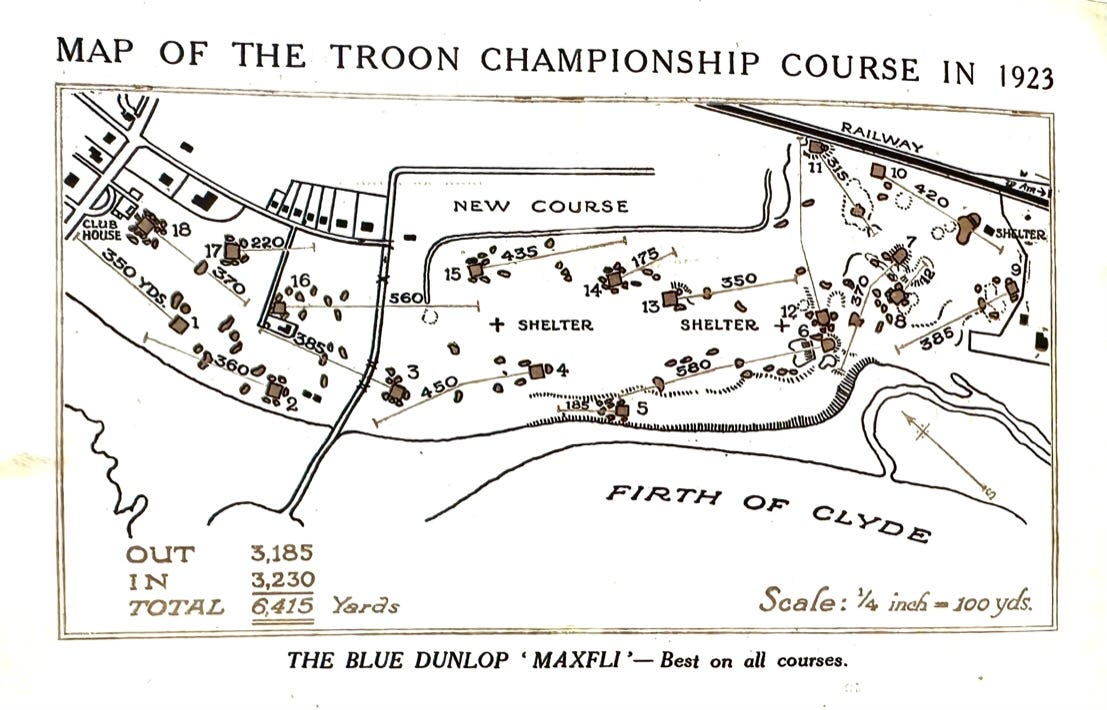Q&A With Colin Cotter
The longtime caddie and student of Royal Troon's illustrious history offers insights into course as The 152nd Open approaches.

Colin Cotter is a student of Royal Troon’s history and a regular caddie there for 38 years. Having grown up playing the links he knows it as well as anyone and will be looping next week for 22-year-old first time Open participant Kazuma Kobori.
Cotter grew up playing the course with his father and brother Andrew, the highly-regarded BBC sports commentator, author and co-parent to Olive and Mabel.
Colin Cotter kindly took a few minutes to discuss the links and its history as the club prepares to host a tenth Open Championship.
GS: How is Troon looking after all of the wet weather?
CC: The rough is the worst I've seen it in years. The greenkeepers are saying they spent the last two or three years trying to thin out the rough, to get it more playable, and then the R&A come along and say, oh, “we're a bit worried you could grow it up?” But to be honest, looking at the courses next door—the Portland course and the municipal courses—the rough was going to be horrendous this year no matter what. We had a very wet winter and then quite a mild spring, and in the space of two weeks it just went nuts. So for Troon it's pretty thick stuff out there.
GS: How are the nine new tees playing?
CC: They’re quite good. It hasn't added that much length. The fairways are firm enough that if you're hitting them it doesn't really make that much of a difference. You could make the course 8,000 yards and it wouldn't make that much of a difference. The fourth is definitely a better par five for the pros from that far back. And I like the tee at the fifth, the par three. On the 16th, the better angle is nicer. So the rest of them, it's more subtle length rather than anything spectacular.
GS: Why do you like the angle better on 16, which has players teeing off from the left of the green now?
CC: It’s putting them back to playing off the angle that was used for the 1923 Open that has not been used since. So it is just a bit different.
GS: I know last time the 11th saw a little less gorse. Has anything changed along the sides of that narrow hole or is it still going to be a brute?
CC: It's pretty similar to how it was in 2016. It's not as tough down the right-hand side as it was in, say, 2004. They took out quite a lot there before and it's pretty much the same as this time. It is pretty similar. They took out a lot of the gorse on the left-hand side about six years ago, purely to let it grow back so it wasn't getting too big and straggling and dying off at the same time. So it's still pretty much the same hole, just an extra 20 yards longer.
GS: I recall a lot of players hitting three-wood last time.
CC: I caddied about three weeks ago for a guy from Thailand who's qualified and we played off the full championship tees. Which was quite good for me to get a chance to play or to see somebody playing off them to get a feel for them. And the back nine, the first day he played, was absolute classic Troon: just dead into a 20-mile-an-hour wind. And he wasn't short. By tour standards, he'd probably be of average length. And he couldn't get home in two. On holes like 18 he was a foot short of the fairway having hit a driver. The 17th was driver for him at 240 yards dead into the wind.
GS: You've been around Troon so many times and it's generally downwind going out and into the prevailing wind coming in. But I've read where you say it's not quite just a classic out and back?
CC: Absolutely. The first thing is you start off playing along the beach and you get to the third hole. You think you're still going in the same direction, but you've turned around 30, 40 degrees, and suddenly, when you think you've hit a crosswind, actually you've now got a helping wind and that can cause problems with the burn. By the time you get to the seventh, you're playing 90 degrees to the first hole. So you've changed around quite a bit and you have to just be more aware of the wind than you think. And while playing into the wind coming home is a nightmare, it is never quite as simple as just saying, this is one way, this is the other way. So it's not as dead and out and back as people think it is.
GS: Is the wind easier to gauge during Open week when flags are flying throughout the property?






